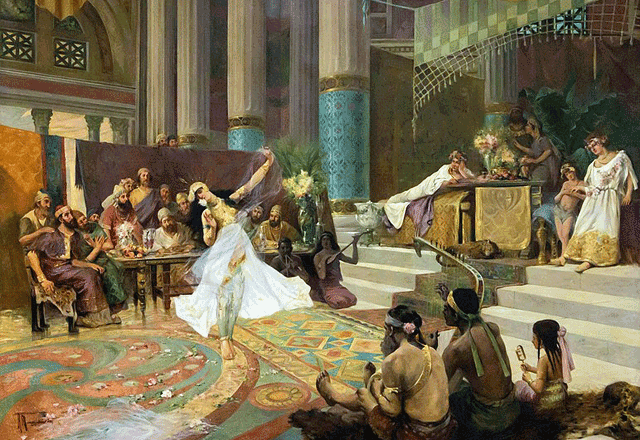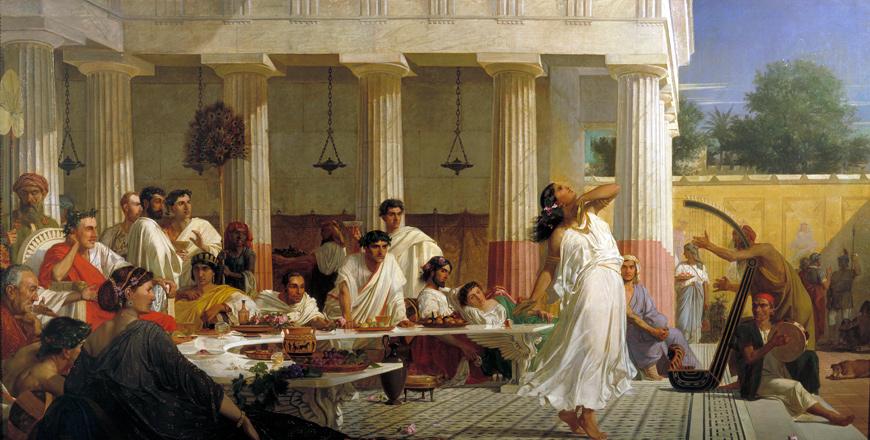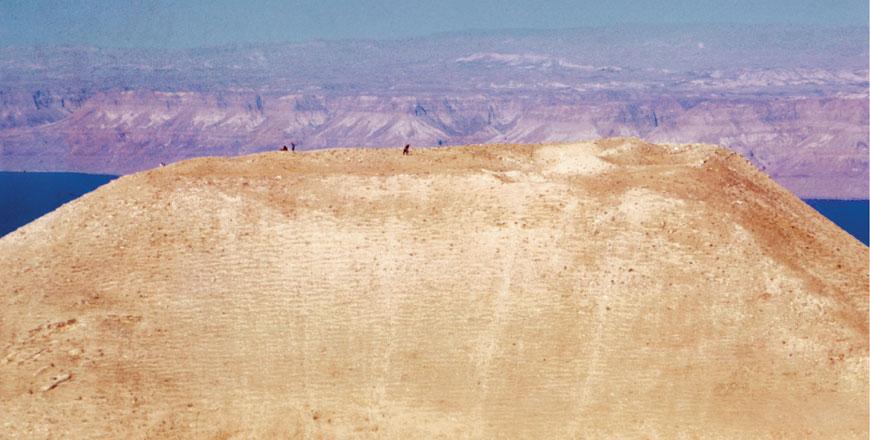You are here
Isolated archaeological site offers ‘time capsule’ of Biblical story
By Saeb Rawashdeh - Jan 03,2023 - Last updated at Jan 03,2023

The Dance of Salome by Andrea Marchisio, oil on canvas
AMMAN — Isolated in the middle of a rocky mountain plateau that dominates the Dead Sea lie the ruins of the Herodian fortress Macaereus, where according to historian Josephus (37 AD-100 AD) and the Gospels, John the Baptist was executed around 29 AD by Herod Antipas, the son of King Herod the Great, said Professor Gyozo Voros, a Hungarian archaeologist who led the excavation of the site.
The mountain stronghold was both a palace and a military outpost controlling the area on the border with the Nabataen Kingdom, and Jerusalem could be seen from its bulwark.
The rocky hilltop served as the first line of defense for the Herodian state, while smoke and fire signals from the citadel were spotted from Masada and Alexandrium in the West Bank.
Machaerus was the easternmost of the Herodian fortresse, with a lavish palace surrounded by the lower city and hot springs. Today, Doric columns, sparse remains of rooms and bathhouse on the hilltop testify to its old glory and notoriety, Voros added.
The site is relatively obscure compared with Petra or Jerash due to its remoteness and the lack of tourist infrastructure. The site, which is situated one and a half hours away from Amman, requires travelling south via the King’s Highway until reaching the village Mukawer. The visit to the site and the remains of local churches takes a few hours.
“The historical data of the Antiquitates on John’s arrest and jail by Tetrarch Herod Antipas are attested by all the Gospels, and their accounts are consistent with and complement that of Josephus. The authenticity of this textual evidence, as a genuine historical reference, was confirmed by Eusebius Pamphili, the bishop of Caesarea Maritima, in ca. 324 AD,” Voros said.
According to the scholar, there was a very serious holy tradition concerning Machaerus in Christianity from the beginning, even though the historical city was destroyed by the Romans and had disappeared from the maps by the end of the 1st century AD.
“Still, Machaerus was always commemorated as the historical place of the Golgotha [or Calvary] of Saint John the Baptist,” Voros said, adding that the site has survived the last two millennia as a “time capsule”.
After the destruction of Machaerus by the same Legio X Fretensis of the Roman army that had destroyed Jerusalem approximately a year earlier, the ancient city was completely abandoned, its ruins buried under the accumulated wall-destructions of the ancient buildings, and Mount Machaerus was never inhabited again, Voros concluded.
Related Articles
AMMAN — For decades, scholars have linked the biblical tradition about the beheading of John the Baptist with the material evidence found at
AMMAN — Prior to 1968, the hilltop of Machaerus, overlooking the Dead Sea near Mount Nebo was an untouched “virgin” site, according to Hunga
MUKAWIR — Pilgrims and visitors to the 2,000-year-old Citadel of Machaerus will be able to authentically envision the point in history when














